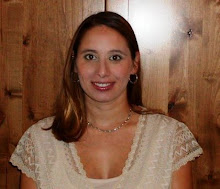


The Hampton-Preston Archaeology Project (HPAP) is devoted to exploring the archaeological component of the historic 4-acre block in downtown Columbia, SC. The Hampton-Preston Mansion and its surrounding yard have had a rich history. The mansion was built by Ainsley Hall in 1818 and is best known for its affiliation with Wade Hampton I and his family who turned Ainsley Hall's home into an urban estate. The mansion and grounds later served as the home to the Presbyterian College for Women and later Chicora College which is today's Queens College in Charlotte, NC. For a more complete history please visit Historic Columbia's website at historiccolumbia.org
This blog is dedicated to posting the weekly happenings of the HPAP. This summer, phase I of the project will be going on. This entails several different surveying methods employed by archaeologists. In addition to the shovel test pits we will be digging on a 40ft grid over the entire site, we will also be conducting a geophysical survey.
To bring everyone up to date on what has been going on so far with the project. I have technically been out in the field for the last three weeks doing various things to get the ball rolling. I started working with Dr. Johnathan Leader, the State Archaeologist, using ground penetrating radar in the northwest corner of the block. I chose this area because I was curious to employ the benefits of the GPR in this corner because this is where the garden greenhouse once existed. We were able to pick up several areas where potential foundations may exist, but it will remain speculative until it is dug. We also started on the test pits in that corner on the 40ft grid and have decided to put in pits every 20ft in this area. Several pits have been laid out and are waiting to be dug. There are currently 2 test pits open right know that are located in the northwest corner next to the wall. Both test pits have currently yielded very little artifacts and are extremely compacted, making them hard to dig. However, what both these test pits have in abundance is gravel. This actually makes sense due to the fact that when the block was commercialized there was a car lot that ran the length of the Pickens Street side of the block. As far as artifacts go, we have recovered a piece of Terra cotta, probably a flower pot and some window glass. There has also been some brick and mortar recovered from both pits. Though the digging is going slow and it has been excruciatingly HOT, we are moving right along. I expect to have more test pits done in the northwest corner by next week's posting. Several people have been out volunteering the last couple of weeks, including the 2008 Summer USC Field School. Thanks to all those that have been out helping me these last few weeks, I wouldn't have gotten anything done without you!
If you have any questions or are interested in volunteering, please feel free to contact me at hferguson@historiccolumbia.org.
Helena Ferguson
Primary Investigator
